Location of electrical components and sensors of the engine fuel system

Open Circuit Relay Location

There are two relays in the fuel pump control circuit - the EFI main relay and the open circuit relay.
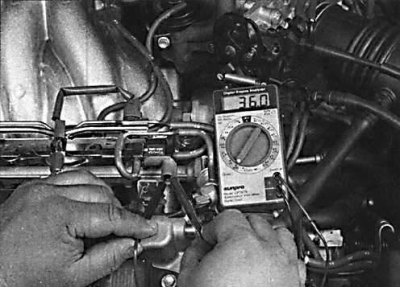
1. Remove the EFI main relay, turn on the ignition and check that battery voltage is being supplied to the relay connector pins.

2. If battery voltage is present at the main relay connector pins, install the relay and check the battery voltage supplied to the open circuit relay.
3. If voltage is applied to the connector pins, check the relay.
Models 1992 and 1993
EFI main relays
1. Using an ohmmeter, check that the resistance between pins 1 and 3 is minimal and between pins 2 and 4 is infinite.

2. Using additional wires, connect pins 1 and 3 to the battery. In this case, the resistance between pins 2 and 4 should be equal to 0.
Open circuit relay (four-cylinder engines)

1. Using an ohmmeter, check that the resistance between the STA and E1 pins and the +B and FC pins is 0, and the resistance between the +B and FP pins is infinity.
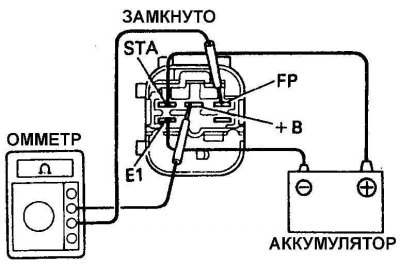
2. Using additional wires, connect the battery to SPA and E1. In this case, the resistance between the +B and FP contacts must be equal to 0.
Open circuit relay for six-cylinder engines

1. Using an ohmmeter, check the resistance of the open circuit relay between pins ST and E1 and pins ID and IC, which should be 0. The resistance between pins B and FR should be infinity.
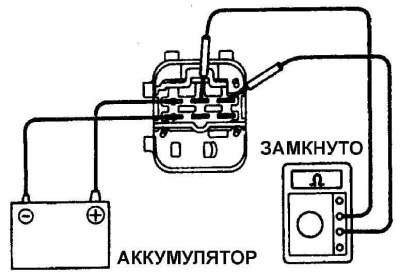
2. Using additional wires, connect the battery to the open circuit relay terminals ST and E1. In this case, the resistance between the +B and FP contacts must be equal to 0.
1994 and 1995 models
Main relay (Nippodenso)

1. Using an ohmmeter, check that the resistance between pins 1 and 2 is 0 and between pins 3 and 5 is infinity.
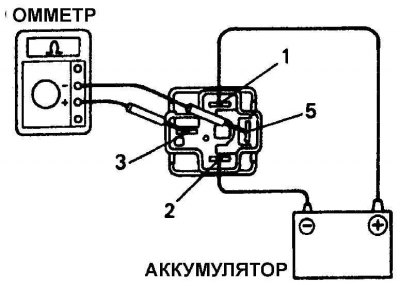
2. Using additional wires, connect the battery to pins 1 and 2. In this case, the resistance between pins 3 and 5 should be 0.
EFI main relay (BOCSH)

1. Using an ohmmeter, check that the resistance between pins 86 and 85 is 0 and between pins 87 and 30 is infinity.
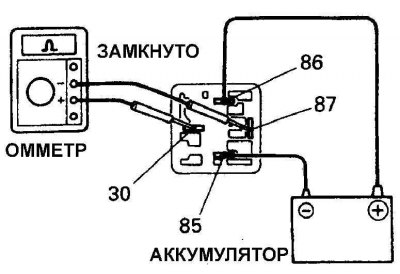
2. Using additional wires, connect the battery to terminals 85 and 86. In this case, the resistance between terminals 87 and 30 should be 0.

3. Using an ohmmeter, check that the resistance between terminals TS and E1 and terminals +B and FC is 0, and between terminals +B and FP is infinity.
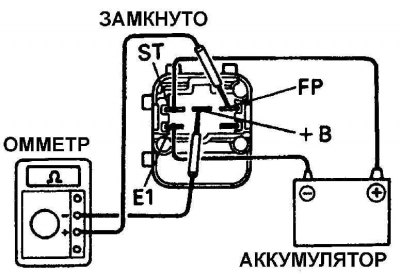
4. Using additional wires, connect the battery to terminals FT and E1. In this case, the resistance between the contacts +B and FT must be equal to 0.
